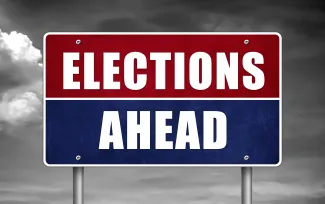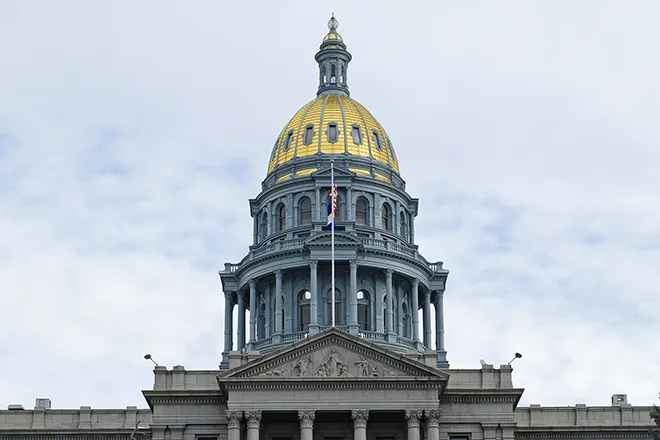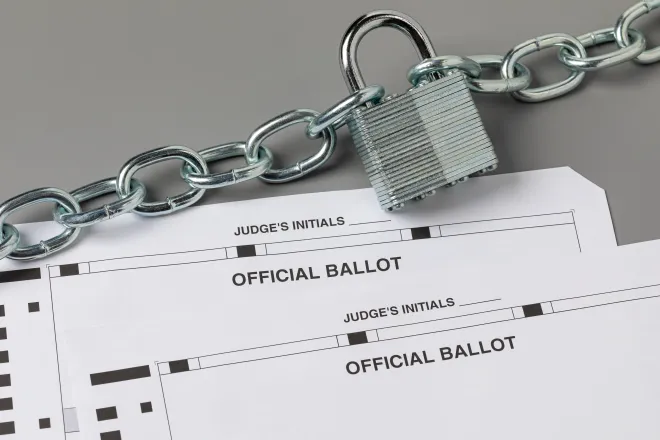
The redistricting debate in Colorado has shifted
Colorado faces increasing pressure to redraw its congressional districts as other states undertake their own mid-cycle redistricting efforts.
President Donald Trump prompted those efforts with his demand to Republican-run states to ensure a MAGA majority in the U.S. House, a move that exemplifies his contempt for democracy and the will of voters. As red states obey by engaging in partisan gerrymandering, other states are left with no choice but to fight back, since fair play in a rigged game yields the biggest loser.
The debate over mid-cycle redistricting in Colorado, which is allotted eight seats in Congress, was long dominated by a seeming consensus that it couldn’t be done, since the state constitution assigns redistricting responsibility to an independent commission that’s supposed to redraw maps after the once-a-decade census.
But the conversation has shifted.

© Vadym Ivanchenko - iStock-1483193368
In August, a pair of Coloradans launched an effort to put on the 2026 ballot a state constitutional amendment that would allow for emergency redistricting in Colorado to restore partisan balance in Congress.
Last month, Phil Weiser, the Democratic Colorado attorney general who is running for governor in 2026, became the first statewide official to support a state constitutional amendment that would allow for emergency redistricting. Since then, the idea has earned the endorsement of other elected officials, such as Democratic U.S. Rep.Jason Crow of Aurora.
Jena Griswold, the Democratic Colorado secretary of state who is running for attorney general, told Newsline this week that she supports the idea of a ballot initiative to allow for emergency redistricting.
“I do not believe that we can allow MAGA to corruptly steal Congress through corrupt redistricting. And I do think that we should pursue, on a very limited basis, redistricting to protect the right to vote and to hold our democracy together,” Griswold said.
After voters in blue California this month adopted a ballot measure to redistrict the state as a Democratic counterbalance to newly gerrymandered Texas and other red states, Governor Gavin Newsom challenged Colorado by name to follow California’s lead.
Growing favor for emergency redistricting in Colorado invites a close look at the options.

© fotoguy22 - iStock - 1468912821
Unlike California, where new maps will be in place for next year’s general election, Colorado could not pursue an emergency redistricting ballot measure until November 2026, and any new maps the effort generates wouldn’t take effect until the 2028 election cycle. By that time Trumpist authoritarianism could have rendered elections themselves irrelevant.
Is there any way Colorado could redistrict in time for next year’s election?
Yes, potentially, in principle.
There is reason to think that the state Legislature, with its Democratic majority, could assert its power to redistrict on its own, without need for voter approval or a state constitutional amendment. That’s because its power comes straight from the U.S. Constitution, which assigns authority over congressional elections, including redistricting, to “the Legislature” of each state.
The U.S. Supreme Court ruled in 2015 that an independent redistricting commission in Arizona was constitutional, but that was a different time for the court. As Doug Spencer, a law professor at the University of Colorado, noted in an interview with Newsline this week, Chief Justice John Roberts wrote a dissent in the Arizona case that flatly said the independent commission was unconstitutional, and today he leads a conservative majority at the court that could be open to overturning the earlier ruling.
An influential analysis from the UCLA Voting Rights Project on the California redistricting plan also highlighted the primacy of the U.S. Constitution. It distinguished between the California independent redistricting commission’s “responsibility” to redistrict and the legislature’s “power” to redistrict, which arguably remains no matter what responsibilities are delegated to other bodies.

It’s also notable that the Colorado constitution does not explicitly bar mid-cycle redistricting or redistricting by an authority other than the independent commission.
This is all theory. Now for reality.
Spencer said that while there might be a theoretical path for the Colorado Legislature to redistrict the state, too many obstacles likely stand in the way. Primary elections are in June, candidate filing deadlines are in March, and there’s almost certainly too little time for the Legislature to redistrict and sustain the plan through the inevitable court proceedings it would entail.
“As the deadlines stand now, there’s just no way that all of those things in the courts would take place before those deadlines,” Spencer said.
Even if there were more time, Democratic members of the Legislature would have to weigh the political wisdom of reasserting their redistricting authority. So far there appears to be little appetite for it.
That’s why, even as MAGA redistricting enthusiasts suffer recent setbacks, some Colorado Democrats are coalescing around support for a long-term redistricting plan that depends on the people’s approval.
Griswold said she supported the independent redistricting commission, and a redistricting ballot measure should only be a break-glass-in-an-emergency provision. She thinks it would be worth having in place even if it takes several years.
“I do think there is value in voting on that in ’26 so that it can be used in ’28 if necessary,” she said.















